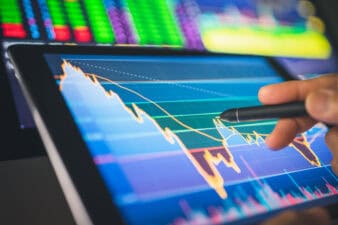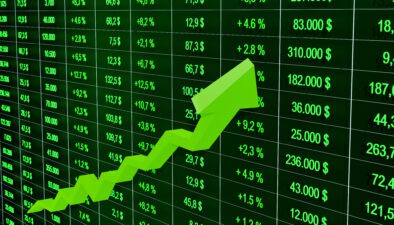These days, many people think the stock market is getting overheated. With earnings down and stocks up, we’ve got the S&P 500 trading at a historically high valuation. At more than 30 times earnings, it’s more than twice as expensive as it usually is.
In fact, there are plenty of indicators suggesting that the stock market is overdue for the crash. The “Buffett indicator,” for example, currently sits at 181–far higher than normal. That alone is cause for concern.
But there’s one indicator that has even more dire implications. This indicator isn’t talked about as much as the Buffett indicator, but it deserves just as much attention. This indicator actually suggests that stocks are approaching 1929-tier levels of overvaluation. And it could get even worse.
So what is this ratio, and why is it such an ominous sign for stocks?
The CAPE ratio
The “CAPE ratio” is price to 10-year average earnings. It’s similar to the market P/E ratio but it uses a 10-year average instead of a trailing 12 month total. This ratio is useful because it looks at earnings over a long period, rather than the most recent period.
According to Jim Reid of Deutsche Bank, the CAPE ratio is currently higher than it was on the eve of the 1929 stock market crash. In fact, it’s higher than it’s been at any other time than right before the 2001 dot-com crash. Using this indicator as a sign of stock market valuation, we’re overdue for a correction. However, there’s one thing we have to address before jumping to any conclusions.
Earnings artificially suppressed by COVID-19 lockdowns
One thing you need to keep in mind when looking at the current CAPE ratio is the fact that 10 year earnings have been artificially suppressed by the recent COVID-19 lockdowns. Apart from tech, most major companies saw their earnings decline this year. The damage was most pronounced among airlines, hotels and movie theatres.
When a company sees its earnings decline by 50% in one year, that’s going to noticeably lower its 10-year average. So, assuming there’s a rapid vaccine rollout in the coming year, then 2020’s earnings decline may prove to have not been indicative of long-term trends, which would make the CAPE ratio less applicable to the current market.
Tech stocks to blame?
One possible reason why the CAPE ratio is so high right now is because of the inflated valuations being given to tech stocks.
If you look at a stock like Shopify Inc (TSX:SHOP)(NYSE:SHOP), its price has gotten extremely high relative to its fundamentals. Trading at 53 times sales and 666 times earnings, it’s one of the most expensive Canadian stocks out there.
Sure, Shopify is growing revenue at 96% year over year. But it’s not clear that that will continue after the COVID-19 related retail closures subside. If it doesn’t continue, then today’s prices will be impossible to justify.
Shopify is not alone in that regard, however. Most of the “FAANG” stocks are currently trading at historically high valuations, and there are no sign of this trend slowing down.
With these stocks making up a larger and larger share of major market indices, they’re enough to drive the total market valuation up. That may help to explain why the CAPE ratio has gotten so high in recent months.








